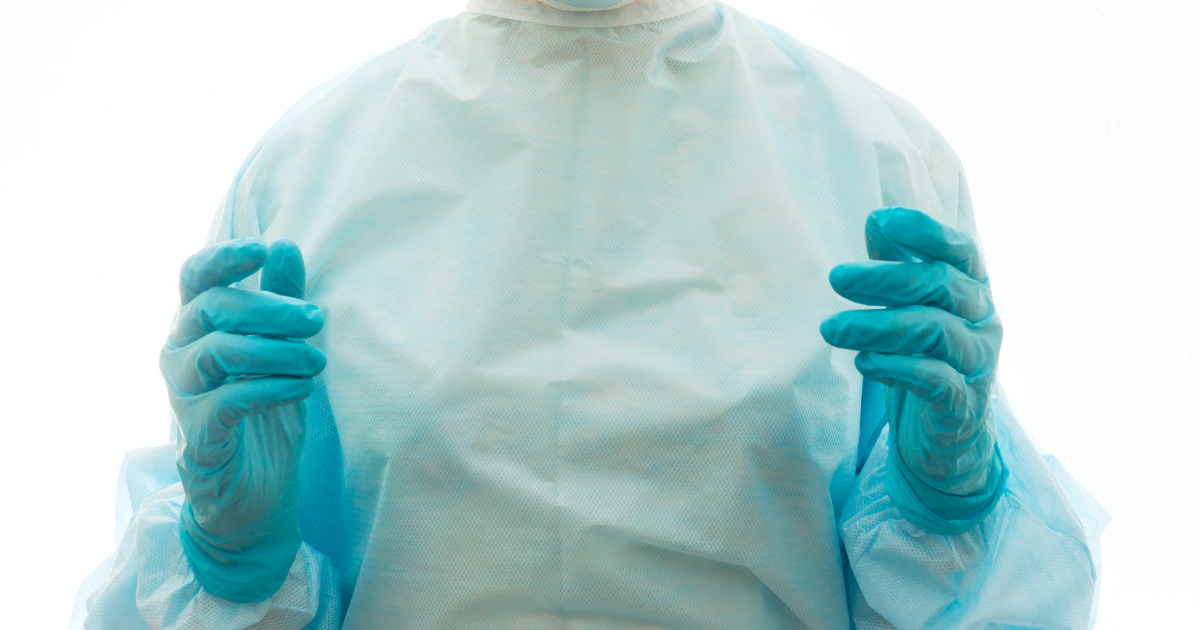In the meticulous environments of cleanrooms and laboratories, maintaining stringent levels of cleanliness and contamination control is paramount. Every piece of equipment, attire, and protocol is carefully selected to ensure the highest standards of sterility. Among the critical components of personal protective equipment (PPE) are sterile oversleeves. Though they may seem like a small part of the overall protective ensemble, sterile oversleeves play a significant role in safeguarding the integrity of cleanroom operations and laboratory experiments and protecting operators from potentially hazardous products.
What Are Sterile Oversleeves?
Sterile oversleeves are protective covers designed to be worn over the sleeves of cleanroom clothing, lab coats, gowns, or other protective garments. They are typically made from materials like polyethylene or other non-woven fabrics that provide a barrier against particulates, fluids, and microbial contamination. These oversleeves are designed to be disposable, ensuring that any contaminants they come into contact with are not reintroduced into the sterile environment.


Why Use Sterile Oversleeves?
1. Additional Product Protection: Sterile oversleeves provide an additional layer of protection, reducing the risk of contamination from the wearer's clothing or skin. This is particularly important in environments where even the smallest contaminants can compromise sensitive processes, such as in pharmaceutical manufacturing, biotechnology, and certain types of scientific research.
3. Increased Versatility: Suitable for a variety of applications, from pharmaceutical manufacturing to healthcare settings and electronics production, sterile oversleeves are a versatile component of contamination control protocols.
2. Additional Operator Protection: In laboratories where hazardous chemicals or biological agents are handled, sterile oversleeves offer an added barrier that protects the wearer from accidental splashes or contact. This not only safeguards the wearer but also helps prevent the spread of contaminants within the lab.
4. Cost-Effective and Convenient: Sterile oversleeves are relatively inexpensive and easy to use. They can be quickly donned and removed, making them a convenient option for maintaining cleanliness without the need for extensive laundering or sterilisation processes associated with reusable sleeves.
Applications of Sterile Oversleeves
1. Pharmaceutical and Biotech Industries: In these industries, maintaining a contamination-free environment is critical for product safety and efficacy. Sterile oversleeves are commonly used to protect against contamination during the manufacturing of drugs, vaccines, and other biologics.
3. Healthcare Settings: Sterile oversleeves are also used in hospitals and clinics, particularly in surgical and procedural areas where maintaining sterility is essential to prevent infections.
2. Electronics and Semiconductor Manufacturing: These industries require ultra-clean environments to prevent defects in sensitive components. Sterile oversleeves help protect against particulate contamination that can compromise product quality.
4. Research Laboratories: In research settings, particularly those involving microbiology, molecular biology, and chemistry, sterile oversleeves help protect experiments from contamination and ensure the accuracy of results.
Summary
In conclusion, sterile oversleeves act as an additional component of contamination control and operator protection strategies within cleanrooms and laboratories. They offer a simple, cost-effective solution to enhance the protection of both personnel and products, ensuring that the highest standards of cleanliness and sterility are maintained. By incorporating sterile oversleeves into their PPE protocols, facilities can better safeguard their operations, protect their operators, and ultimately achieve better outcomes in their work.






